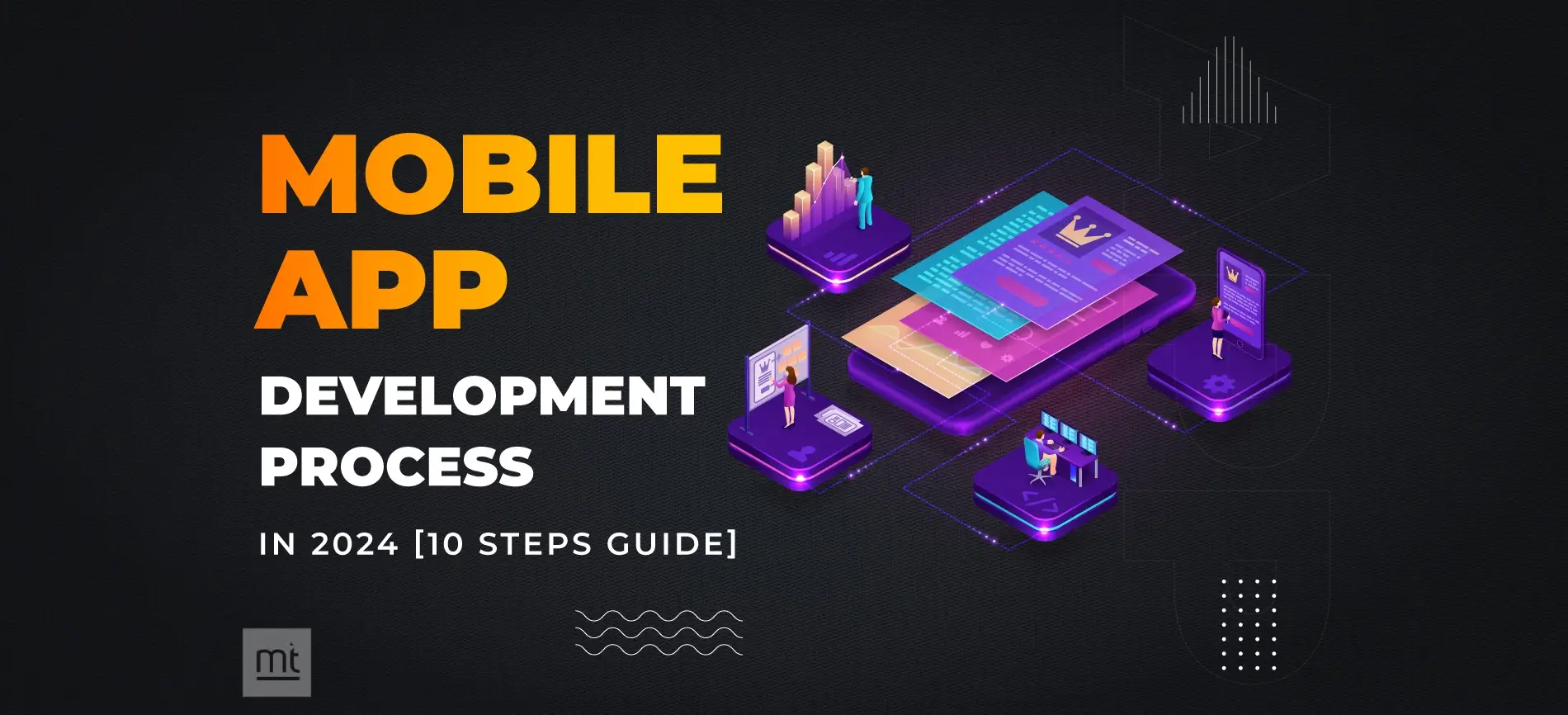Quick Summary:
Unlock the secrets to safeguarding your app idea in 2024. Our complete guide reveals the steps to patenting your innovative app and protecting it in the competitive digital arena
Introduction:
A great idea is as rare to find as a pearl in the ocean. Although it is hard to discover, it is extremely valuable. And this is exactly true in the world of mobile applications. With the market growing more competitive than ever, having a well-built app can draw a great and ever-growing customer base
But what if a mobile app idea that you made is replicated? It is a nightmare, for sure. But don't you worry as this can be prevented?
People frequently ask the question: Is it possible to patent a mobile application concept? The answer is obviously yes. Obtaining a patent for your mobile application is necessary even before revealing it to the market and investors. It can save your project from being duplicated.
Now, let's go through the detailed process of how to patent an idea.
What is a Patent?
Generally, a patent is an exclusive right that is given to any invention. This right is solely owned by any individual or company that has developed the unique product. Hence, patenting a mobile app idea is to patent a concept that is unique to the market. A mobile app patent is an intellectual property right that helps you shield your ideas from copyright, non-consensual, and illegal use.
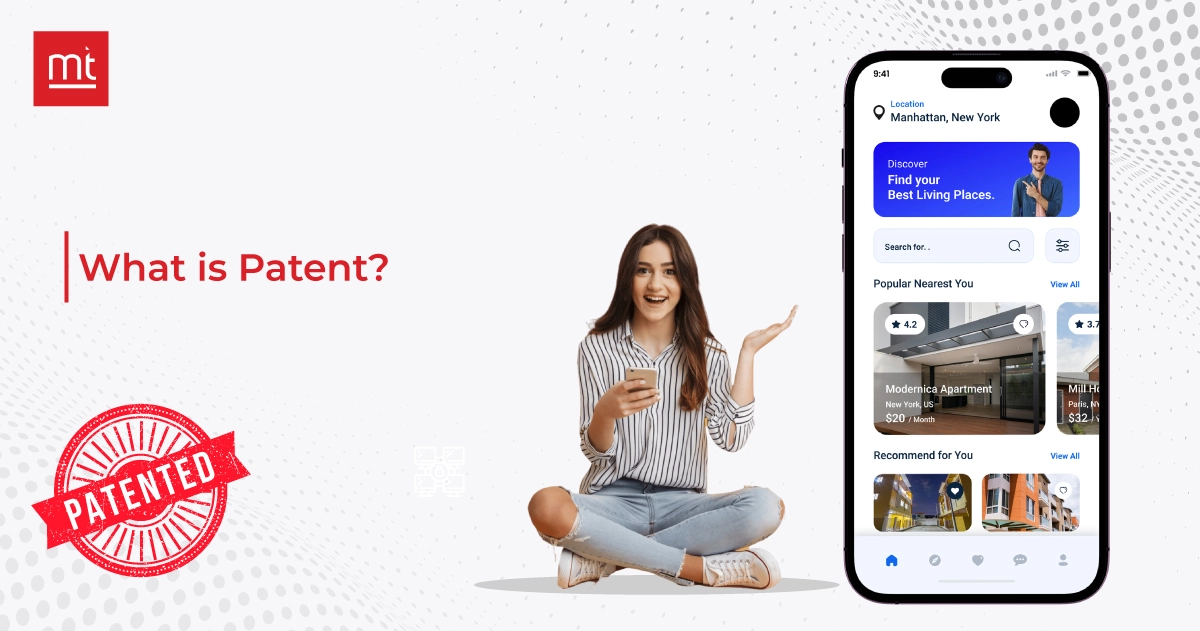
Apart from this, the patented mobile application idea can restrict individuals and companies from making duplicates and false claims. When you are successful in patenting by an authority, you get a unique patent code. Hence, with the help of this code, one can verify patenting mobile app ideas to ensure originality.
Why is it important to obtain a patent?
In this modern era, mobile apps work as the most valuable digital product for all businesses. Among the entire 8 billion world population, there are about 6.92 Billion smartphone users that use smartphones. Hence, this comes to 86.92% of people across the globe.
Moreover, if you crack a new mobile app idea and come up with a great app concept, just like Facebook, WhatsApp, TikTok, or PUBG, then it is necessary that you secure it and take the edge over the competition.
This guide will help you to how to patent your an app idea, patenting your mobile app idea will give you all rights to claim its originality as yours. Original app patents will help you restrict others from stealing or copying your app. It will entitle you to get compensation from all individuals who attempt to unlawfully copy or clone your idea. When you patent your mobile app idea, you can:
- Ensure the safety of your unique app idea from being copied or exploited by unauthorised people.
- Seek the right to go for legal action against people who release the same app before you launch it.
- Help raise funds from investors by having your official idea patented.
- Establish trust and reputation in the market with great advantage.
What are the requirements for obtaining a patent for a mobile application?
1. Make Sure Your Idea Is Completely Original
The main purpose of patents is to ensure the safety of inventions and protect them. It allows everyone to work on something other than a similar kind of project that is already on the market. Hence, you should conduct market research before you go through your design and discovery process. It will help you ensure that the app is unique. If it is thought to be similar to any other application, the chances of rejection increase.
2. Arrange Required Documents
Obtaining a patent for a mobile app idea will require extensive amounts of research along with paperwork and documentation. There are different rules for you to patent mobile apps in various countries. Hence, you should properly research and know the documents needed. In the majority of cases, here are the documents you will need:
- Oath/Declaration form
- Information Disclosure Statement
- Entity Status Form
- Application Data Sheet (ADS)
- Specification
- Patent Cooperation Treaty (for International Filings)
- Drawings
- Fee Sheet
- Cover Sheet
3. Determine What You Want To Patent
A mobile app is an umbrella term that covers many software products. It has different technical and non-technical elements that make it a fully functional product. You will have to hire Android app developers for specific ones and others as per your needs. Hence, when you go to apply for a patent, you have to state what exactly you want to patent in your app. Do you want to know what things you can patent? No worries, here are a lot of the things that you can patent. Along with this list, you can seek help from a mobile app development company for this part.
- App concept
- Interaction with the server
- Database creation
- Interaction between devices
- Presenting information on a smartphone
- Third-party server involvement
- Server processing
- Networking
- Security and authentication tasks
- User identification
- Data pushing
- Mobile interface processing
- App design
How do you know if your mobile app is eligible for a patent or not?
App ideas should be new and unique.
It's not enough to have a great mobile application idea. Know that it should fall in the category of unique. You may just come up with the existing application ideas with better versions. Hence, the discovery phase is very important for the mobile application patent process. Check if the idea is unique and contains features that should not be in any apps.
Hence, know that you should not come up with a concept that has an added feature. To become eligible for patenting an application, all aspects like architecture, design, and kind of problem should be unique.
The app must qualify to be useful.
As you are already aware, the number of apps is tremendously increasing. Hence, as per reports, the majority of applications in the market are similar to others in particular aspects. Therefore, your app idea is not eligible for a patent if it's a clone or just a modified one. For instance, developing an e-commerce app like Amazon with added features is a different idea than a patent app.
The app must be more of an invention.
Mobile app development could be an invention if you build something. The invention does not mean hiring iOS developers and building the same app for different platforms. Hence, if your app provides solutions, it can be considered an invention for getting a patent. For a better understanding, you should analyse portfolios of top mobile and iPhone app development companies. It will help you know where they stand as an innovation.
When should you not consider patenting your app idea?
Patenting is one of the best ways to ensure the safety of intellectual property. Hence, when it comes to obtaining a patent for your mobile application, only some owners need it. And you might not know that these patents are meant only for a few specific app owners.
If you own a startup, small business or SME, it won't be cost-friendly to get a patent for mobile apps. Along with mobile app development costs, it's tough to bear patenting costs. Many drawbacks come along with patenting:
- It adds more costs
- The time to obtain a patent is huge
- You don't get surety of protection
- You will have to pay more for claiming copyright infringement
- Your app idea might turn into a mixed version
Hence, there are better choices than patenting mobile apps for startups, SMEs, SMBs, and individual owners. This is because they operate on limited resources and costs. They should spend their resources more on Android app development companies.
Rather than patents, they can go with alternatives like trademarks, copyrights, and NDAs for securing their app idea. These are affordable and only need a little bit of time.
What are the different types of patent applications?
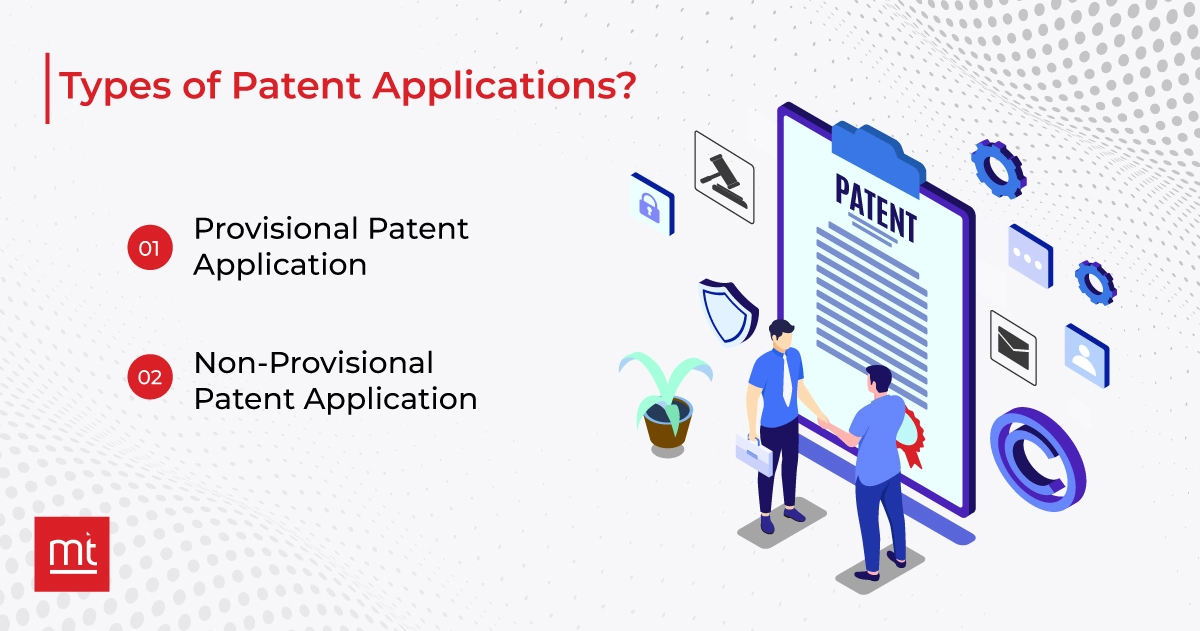
Aspect | Provisional Patent Application | Non-Provisional Patent Application |
Initial Filing Purpose | Provides a filing date and secures priority without a detailed patent claim. | Requires a full patent application with detailed claims and descriptions. |
Duration of Protection | Provides 12 months of protection. After this period, a Non-Provisional application must be filed to maintain protection. | Offers 20 years of protection from the date of filing (if granted). |
Formal Requirements | Has fewer formal requirements and is often less expensive to file. | Must meet all formal requirements, including claims and a detailed description. |
Patent Pending Status | Grants "Patent Pending" status, allowing the term to be used but without enforceable rights. | Grants "Patent Pending" status, with full patent protection if granted. |
Public Disclosure | Doesn't require a detailed public disclosure of the invention. | Requires detailed public disclosure of the invention. |
Examination and Grant Process | Doesn't undergo a detailed examination process. | Undergoes examination and must meet patentability requirements to be granted. |
Conversion to Non-Provisional | Can be converted into a Non-Provisional application within 12 months. | Not applicable, as Non-Provisional applications are complete from the start. |
What Are The Benefits to Patent An App Idea?
You may be aware of many aspects of patenting a mobile application. Let's go further and discuss the benefits of patenting an app:
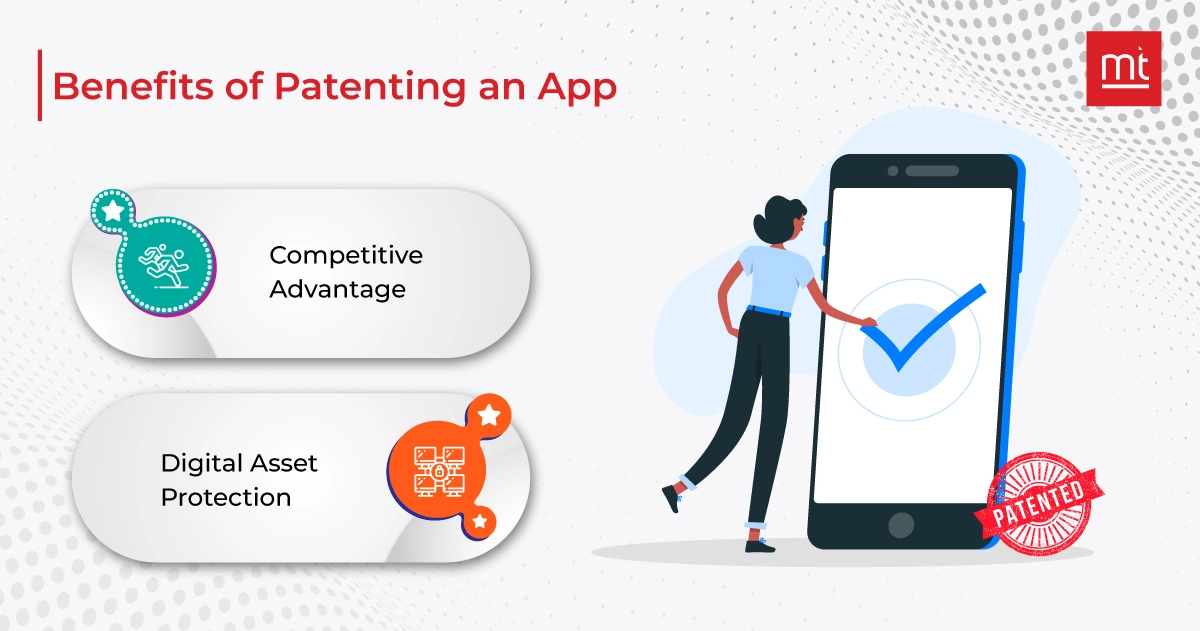
1. Competitive Advantage
The two main forces behind success in the app industry are creativity and innovation. Hence, filing a patent for your app idea can help you prevent your competitors from getting into your unique concept before it reaches the market. If you go for a provisional patent for an app idea, then it will be labelled with "patent pending". The patent you get, in this case, will have an original filing date. Hence, in this way, it could prevent other businesses from reproducing your app ideas without you agreeing to them.
2. Digital Asset Protection
Filing patents for your mobile app ideas can help you protect the digital assets that you developed or are in progress. Hence, another benefit is that if any person exploits it, you are entitled to receive damages, grievances, and compensations for the imitation or infringement of the app idea.
What are the steps for patenting a mobile application?
Step: 1 Find and enlist with a patent attorney
If you want to present a great and high-end patent with all the information and increase your chances of getting selected, it is good to hire and consult a software patent lawyer. Choose one that has years of experience.
As it is a legal process, it might need litigation. Hence, it is always preferable to hire a professional rather than do it by yourself. It is not advisable to go with the first one that comes across. Conduct research and look for the best that is in your budget.
Step: 2 Mobile app invention disclosure
When your mind cracks an idea, it's just half of the work done. Hence, to continue this, a person has to bring the idea into reality to ensure its feasibility. It is one of the most prominent criteria for eligibility.
The court will demand the necessary proof of the invention to issue a patent against the application. Hence, make sure to have documentation for the entire process. Also, it would be helpful if you develop a prototype of the application and break down the flow. Hence, this will help your attorney easily figure out the flowchart of the application. It is not code but functionality and process that received a patent.
It is helpful in figuring out the different implications of your application in various industries. It also provides a new direction to think about other elements in mobile apps that are eligible for patenting.
Step 3: Practice patent search
No matter if you have done your homework, it is always better to hire professional patent attorneys. They are responsible for conducting worldwide searches for applications similar to yours. Hence, this can save you from unanticipated infringement from other companies.
It's always advisable to spend more and ensure that your patent has a better chance of getting sanctioned than to start from scratch. You can also do your research from the USPTO website.
Step: 4 File provisional or non-provisional application
As mentioned above, there are two kinds of patent applications that you can employ for your patent application for mobile apps. These two are provisional and non-provisional patent applications.
Hence, if you want to gain a patent faster, then having a non-provisional is the best choice. However, if you are not in a hurry and need time, then it's good to go with a provisional patent application. It is said to be not examined, unlike non-provisional.
Step 5: Submit your application
The closure step to obtain a patent for an app idea is applying. Hence, when you have successfully performed all of the steps mentioned earlier, you must file it with the USPTO. Though this is a tough process involving much paperwork, you can go through it. Some important documents you will need are:
- Oath/Declaration
- Specification
- Entity Status Form
- Information Disclosure Statement
- Application Data Sheet (ADS)
- Claims
- (optional) Patent Cooperation Treaty (for International Filings)
- Drawings
- (optional) Application to Make Special
- Fee Sheet
- Cover Sheet
Step 6: Renew and Extend your patent
Regularly renew and maintain your patent, paying attention to deadlines and fees. It ensures your mobile app remains protected for the maximum duration.
Step 7: Innovate and Improve your patent
Continue to innovate and improve your mobile app throughout the patent period. You can file additional patent applications for new features or enhancements to maintain a competitive edge.
Remember that the patenting process can be complex and time-consuming. Working closely with a patent attorney and staying updated on patent laws and regulations is crucial. By following these steps, you can safeguard your mobile app's innovative features and ideas, providing a strong foundation for your venture in the digital landscape.
How much time and cost does it take to patent a mobile application?
Obtaining a patent for a mobile application is a time-consuming process. The office will conduct extensive research and take enough time to grant patent or intellectual property rights for mobile app ideas. On an average basis, it can take about 1.5 to 4 years to get patent rights successfully.
On the other hand, the cost of a mobile app patent will vary depending on different factors, like the type of the application. Some of these factors are:
- Patent search cost
- Patent application fee
- Elementary filing fee
- Patent attorney fee
- Category of patent application
Normally, the cost for provisional patents might be $ 2,000 to $ 5,000. And if you go for a non-provisional patent, it might be around $10,000-$15,000.
The Alternatives to App Patents
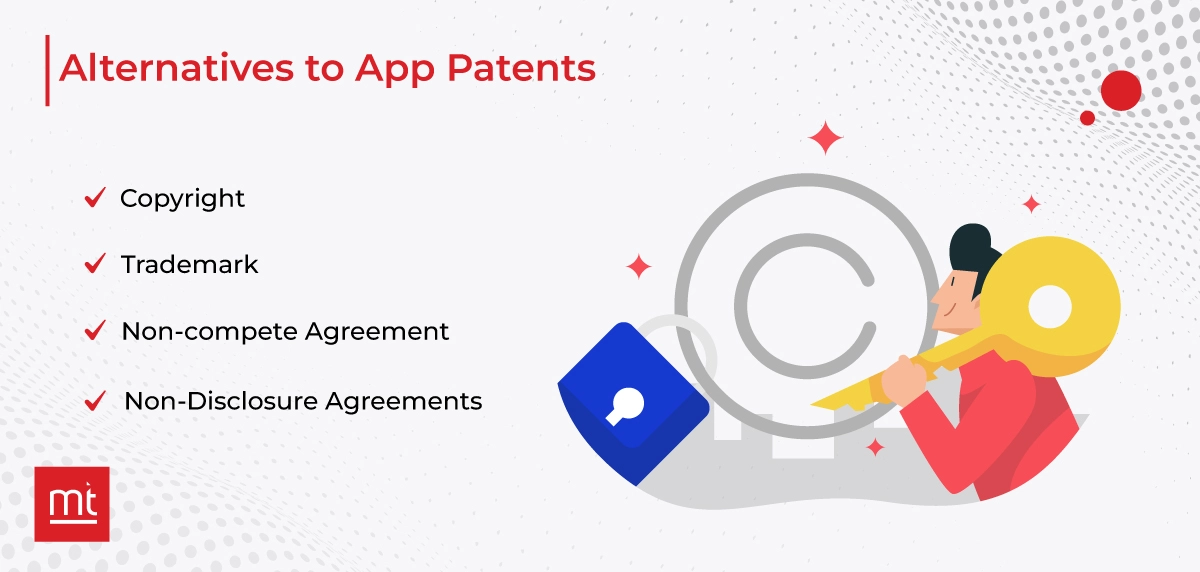
1. Copyright
The debate about getting a Mobile app copyright or patent needs to be revised. Just like patents, copyrights also are a type of IPR but quite different. Hence, if you are thinking of how to obtain a copyright for an app idea, then know that it is all about collecting rights issues to the inventor or author of any work. This work can include literary, artistic, educational, musical, or computer programs. Further, you can also allow a person to publish or reproduce their work, make derivatives, etc., no matter if they are published or unpublished.
It protects the expression of ideas rather than the idea exactly. Hence, you can seek copyright for the app idea and logo but not the app. It is because it does not cover facts, ideas, systems, or methods of operation.
2. Trademark
Patents aim to protect from being sold by others, but a trademark is known to protect words, phrases, symbols, logos, or other devices. These are said to be a source to identify the goods or services of the originator. Hence, this can prevent other companies from making use of it. A trademark can be issued if you want the competitors to stop copying the logo of your application. It helps you avoid confusion among users.
3. Non-Disclosure Agreements
The NDA is a document that can be signed by all the authorities that are working with you on the project. This agreement is generally signed between a party and a mobile app development company. It can bind them legally to keep your idea and technical aspects confidential. Hence, this can protect your ideas from exploitation.
4. Non-compete Agreement
Non-compete agreements restrict employees or partners from creating similar apps or working for competitors. It prevents direct competition. It may not apply to independent app developers or third parties.
Conclusion
I hope you have got an answer to how I can patent my idea. Patenting a mobile app idea is an intelligent move and a method to safeguard your innovation. It doesn't only restrict access but also avoids stealing and copying your app idea. It also helps you establish brand authority by having official rights.
Patenting a mobile application is recommended for companies with large projects for the future. They must be able to bear costs, unlike small businesses and entrepreneurs. It is smart for them to refrain from investing time and effort in patenting.
About Author
Subscribe to Our Newsletter!
Join us to stay updated with our latest blog updates, marketing tips, service tips, trends, news and announcements!


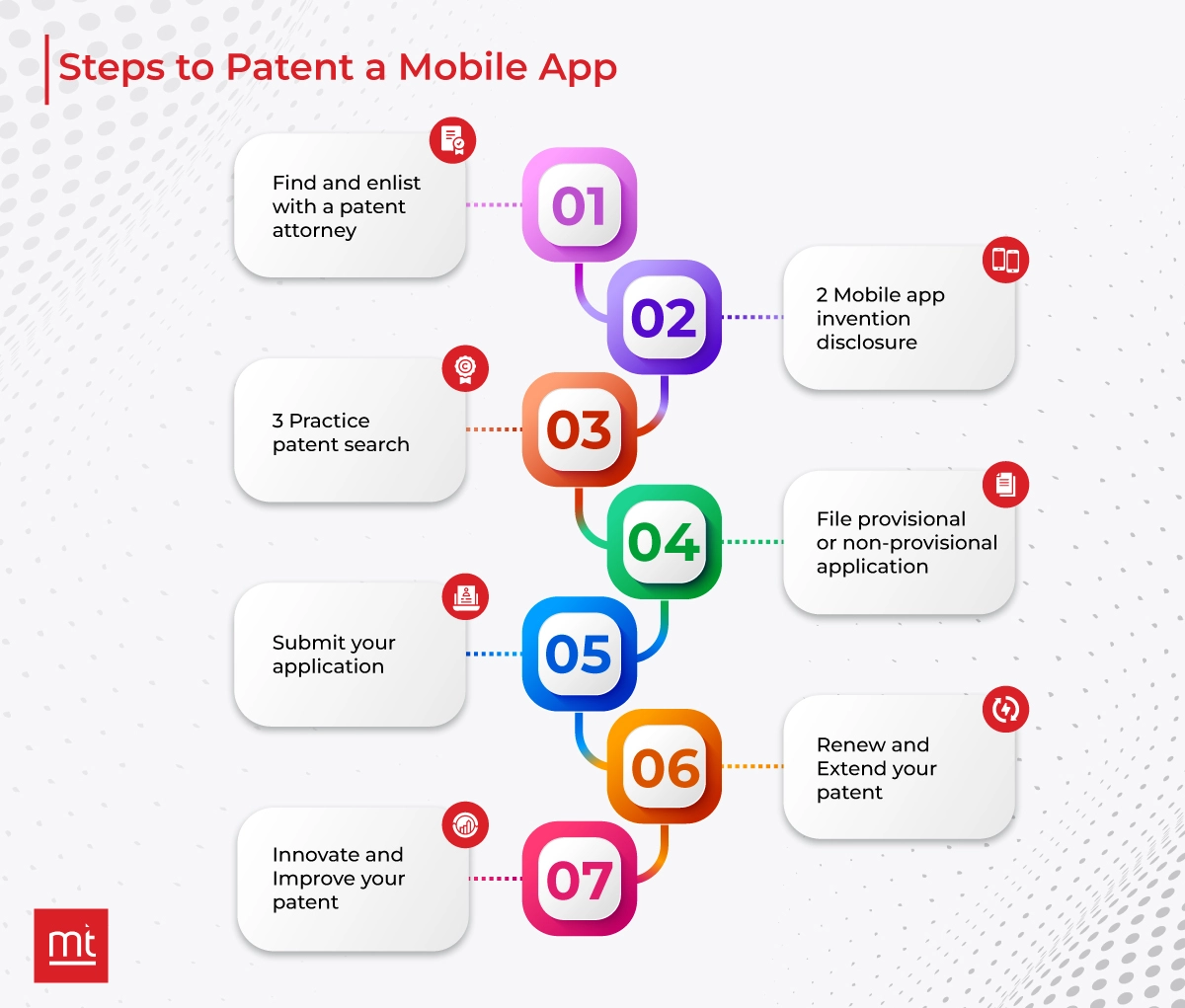


![How Much Does It Cost to Build a Mobile App? [Checklist]](https://www.manektech.com/storage/blog/image/1708005911.webp)

